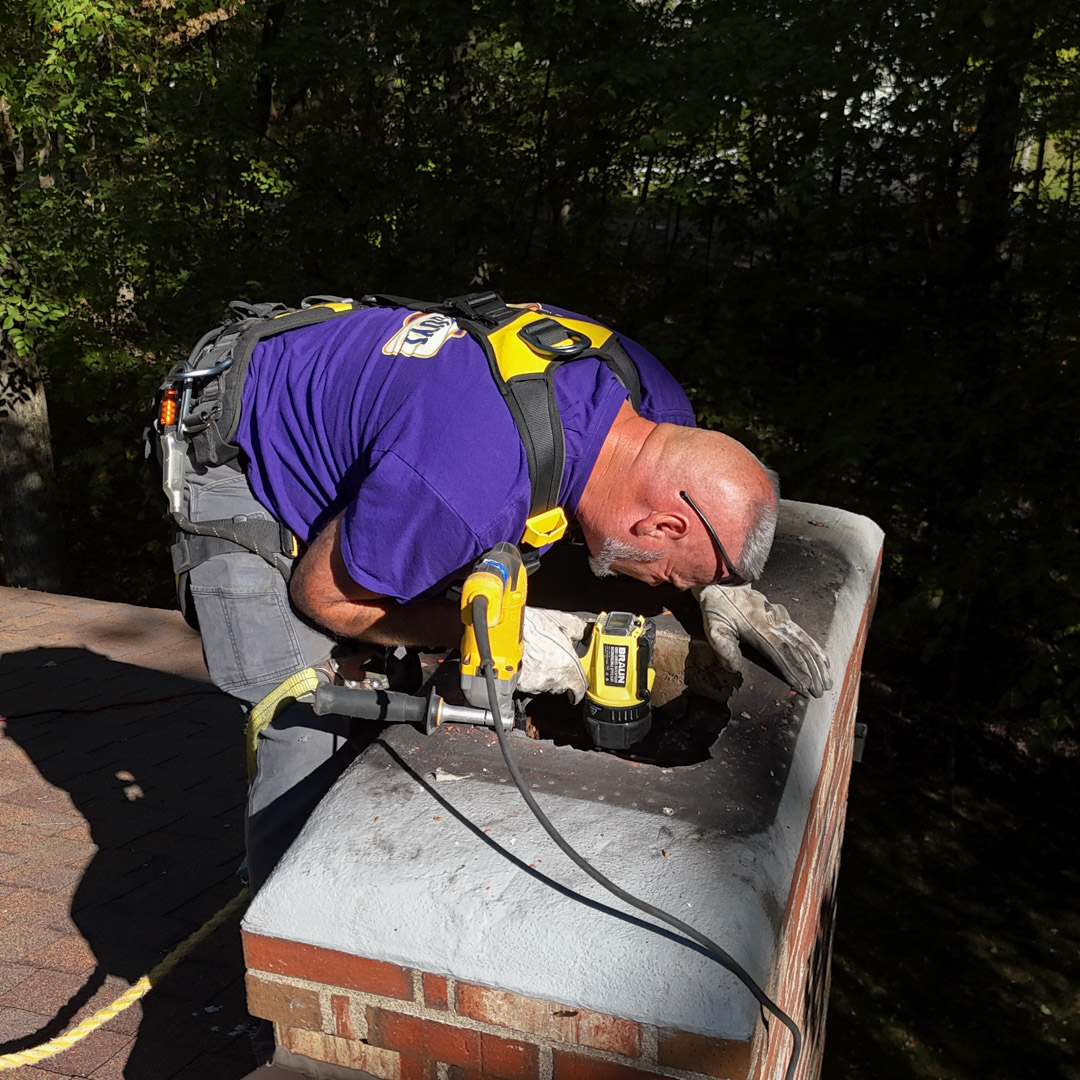5 Important Parts of a Chimney Inspection
While you can visually keep an eye on your chimney and spot obvious signs of damage and malfunction, you can’t see what a professional chimney inspector can see. For this reason, all chimney service companies and fire safety agencies in the U.S. recommend annual chimney inspections performed by trained inspectors.
The Chimney Guys of Pataskala, OH, would like to cover five of the most important elements of a proper chimney inspection.

1. Check for built-up creosote
If you use a wood-burning fireplace, it’s going to add creosote to your chimney. Creosote is formed when smoke condenses in the flue and is the #1 cause of reported chimney fires in Ohio each year.
A chimney inspection will determine if a chimney sweep is needed to remove built-up creosote.
2. Check for flue debris
Along with creosote, debris is found in many chimney flues. Leaves, twigs and small animal nests are particular problems that can narrow the flue and cause smoke to draft inefficiently.
Worse than smoke is the deadly carbon monoxide and other dangerous combustion gases that smoke carries. Your chimney inspector will let you know if debris needs to be cleaned out of your chimney.
3. Check for structural damage
Over time, a chimney’s bricks can start to crack, and mortar between the bricks can crumble away. This will allow water to move into the system, where it will start an ongoing cycle of deterioration.
Serious masonry damage can lead to a chimney that tilts or eventually collapses. A proper chimney inspection will evaluate the condition of your chimney structure.
4. Check the chimney’s components
Every chimney component is in place to do a specific job. When any of them are damaged, trouble could soon start. A chimney inspection will check a range of components, including:
- Chimney cap
- Top-mount damper
- Chase top
- Concrete chimney crown
- Chimney liner
- Chimney flashing
- Fireplace damper
Using a video scan when needed, your inspector will identify component problems that should be addressed.
5. Emergency troubleshooting
Beyond basic chimney inspections as described above, chimney technicians provide emergency inspections to troubleshoot “unusual” problems.
Odors
Strong, unexplained odors coming from the chimney and through the fireplace could be caused by excess creosote and soot, deceased small animals or rotting nesting materials and tree debris.
Smoke backups
Smoke can back up into the home when the flue is incorrectly sized for the fireplace and when the flue is narrowed by debris or creosote. A malfunctioning damper can also cause this problem.

Noises in the chimney
This usually means that birds, squirrels, raccoons, rodents or other critters are trying to make a home in the chimney. They need to be removed safely and quickly.
Chimney fire
Chimney inspectors can tell if there’s been a fire in your chimney. Not all chimney fires are obvious, but excess smoke, tapping sounds and a rumbling noise are signs that a fire is happening. An emergency chimney inspection should always be scheduled following a known or suspected chimney fire.
Is it time to have your chimney inspected?
If it’s been more than a year since your chimney was last inspected, The Chimney Guys is standing by to help. We provide licensed basic and emergency chimney inspections throughout the greater Columbus, OH, region. Call us or reach out through our contact form.



